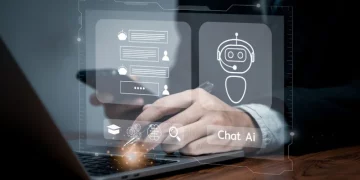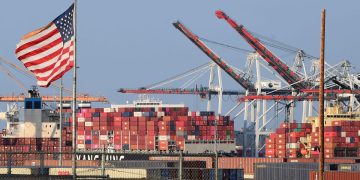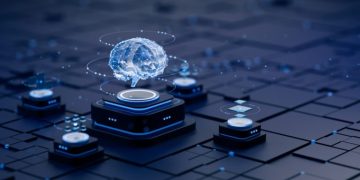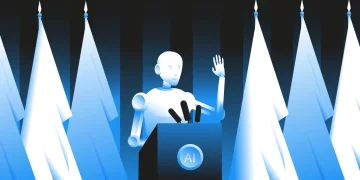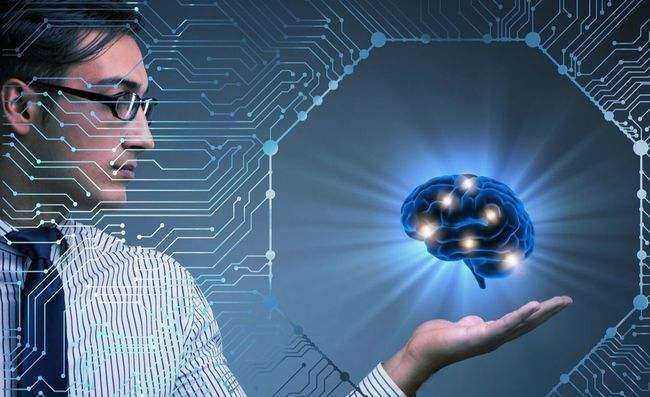Introduction
The rapid development of artificial intelligence (AI) and automation technologies has sparked a global debate about the future of work. From manufacturing plants to service industries, AI and automation are beginning to replace jobs traditionally held by humans, while simultaneously creating new opportunities. This technological revolution is poised to dramatically reshape the global labor market, raising important questions about job displacement, the transformation of skills, and the nature of work itself.
As we look towards a future driven by AI and automation, it is essential to understand how these technologies will influence labor markets. Will automation lead to widespread unemployment, or will it create new industries and opportunities? What kinds of jobs will be created, and which ones will be displaced? How can workers, businesses, and governments navigate this transformation?
This article will explore these questions, focusing on the impact of AI and automation on employment, the skills required for the future workforce, and the policies necessary to ensure a fair and sustainable transition.
I. The Rise of AI and Automation: What Are the Key Technologies?
- Artificial Intelligence (AI)
Artificial intelligence refers to machines or software that can perform tasks that typically require human intelligence. These tasks include learning, reasoning, problem-solving, language understanding, and vision. AI is already being used in a wide range of applications, including natural language processing (NLP), computer vision, machine learning, and robotics. The ability of AI to analyze vast amounts of data quickly and make decisions autonomously makes it a powerful tool for industries such as healthcare, finance, retail, and manufacturing. - Automation and Robotics
Automation refers to the use of machines and technology to perform tasks that would otherwise be carried out by humans. While automation has been a part of manufacturing for decades, recent advancements in robotics and AI have led to more sophisticated automation systems that can perform a wider range of tasks, from assembly line work to customer service and beyond.- Robotic Process Automation (RPA): RPA is a form of automation that uses software robots to automate repetitive and rule-based tasks, often in administrative functions such as data entry, billing, and payroll processing.
- Autonomous Vehicles: The rise of self-driving cars and trucks powered by AI and machine learning technologies has the potential to revolutionize transportation and logistics industries, leading to massive shifts in employment patterns.
- Machine Learning and Data Analytics
Machine learning, a subset of AI, enables systems to learn from data and improve performance without being explicitly programmed. In the workplace, machine learning is being used to optimize supply chains, personalize customer experiences, predict consumer behavior, and improve decision-making. Businesses are increasingly relying on data analytics to drive efficiency and make informed strategic decisions.
II. The Impact of AI and Automation on the Labor Market
- Job Displacement: Which Jobs Are Most at Risk? As AI and automation technologies advance, many routine and manual jobs are at risk of being displaced. Jobs that involve repetitive tasks, especially those in sectors like manufacturing, retail, logistics, and customer service, are highly susceptible to automation. For example:
- Manufacturing Jobs: In manufacturing, robots have already replaced workers in tasks such as assembly, packaging, and inspection. As automation technology continues to improve, more complex tasks such as welding, painting, and quality control could be automated, further reducing the demand for human labor in factories.
- Retail and Service Jobs: Retail workers, cashiers, and customer service representatives are increasingly being replaced by self-checkout kiosks, chatbots, and AI-driven customer service tools. In hospitality, robots are beginning to take over tasks like cleaning, delivery, and even cooking in some restaurants.
- Transportation and Delivery Jobs: Autonomous vehicles, including self-driving trucks and drones, are poised to disrupt the transportation and logistics industries. This could lead to significant job losses among truck drivers, delivery personnel, and other transportation-related occupations.
- The Creation of New Jobs: What Are the Emerging Opportunities? While certain jobs may be lost due to automation, new opportunities are likely to emerge as AI and automation create entirely new industries and sectors. These new jobs often require higher levels of skill, creativity, and adaptability. Some examples of emerging opportunities include:
- AI and Data Science Jobs: As AI becomes more integrated into businesses, there will be a growing demand for data scientists, AI specialists, and machine learning engineers who can design, build, and maintain AI systems.
- Robot Maintenance and Programming: While robots may replace certain human jobs, they still need to be designed, programmed, maintained, and repaired. This opens up opportunities for robotics engineers, technicians, and specialists in automation systems.
- Healthcare and Elder Care: As the global population ages, the demand for healthcare professionals and elder care workers is expected to rise. AI can assist healthcare professionals by analyzing medical data, diagnosing diseases, and suggesting treatment plans, but human workers will still be needed to provide direct care.
- Green Jobs and Sustainability: As industries pivot towards more sustainable practices, AI and automation will play a role in renewable energy, environmental monitoring, and waste management. New green jobs in these sectors are likely to emerge as the world continues to focus on mitigating climate change.
- The Changing Nature of Work: From Routine Tasks to Creative and Cognitive Roles With the rise of AI and automation, routine and manual tasks will increasingly be handled by machines, leaving human workers to focus on roles that require creativity, problem-solving, empathy, and complex decision-making. Jobs that rely on human interaction, emotional intelligence, and creative thinking will remain in demand, including:
- Creative Industries: Professions in arts, design, content creation, and entertainment will continue to thrive as AI tools are used to augment, rather than replace, human creativity.
- Leadership and Management: Leaders will need to manage increasingly complex teams, integrate AI and automation into business processes, and make high-level decisions that require human judgment and strategic thinking.
- Consulting and Advisory Roles: As businesses adopt AI and automation, there will be a growing need for consultants and advisors who can help companies navigate this transition, understand the potential impacts, and design strategies for integrating new technologies.
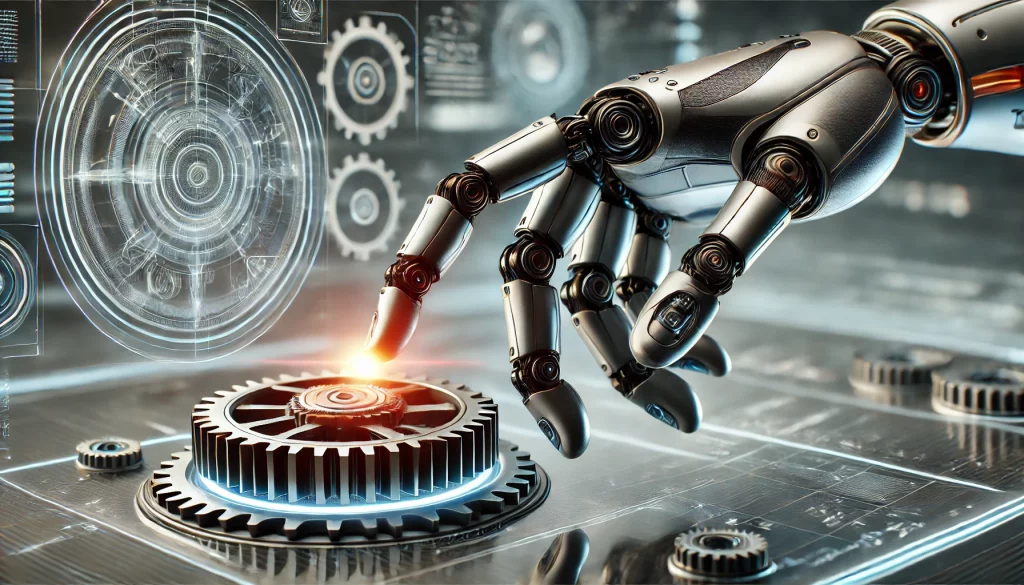
III. Preparing the Workforce for the Future
- Reskilling and Upskilling: Adapting to a Changing Job Market As AI and automation reshape the labor market, workers will need to continuously adapt by acquiring new skills. Reskilling and upskilling initiatives will be essential to help workers transition into new roles and industries. Governments, businesses, and educational institutions must collaborate to provide training programs that equip workers with the skills needed for the future.
- Focus on Soft Skills: While technical skills related to AI and automation are important, soft skills such as critical thinking, emotional intelligence, and communication will become even more valuable. These skills are less likely to be automated and will help workers thrive in a technology-driven world.
- Lifelong Learning: As technology continues to evolve, the need for lifelong learning will become more pronounced. Workers will need to continuously update their skills to remain relevant in the job market, which may require a shift in educational and training systems.
- Government and Policy Responses: Ensuring a Fair Transition Governments have a crucial role to play in ensuring that workers are not left behind as AI and automation take hold. Policies that promote social safety nets, support reskilling initiatives, and create new job opportunities will be essential for mitigating the negative effects of technological disruption.
- Universal Basic Income (UBI): Some experts have proposed UBI as a potential solution to the challenges posed by job displacement. UBI would provide a guaranteed income to all citizens, regardless of their employment status, helping to alleviate poverty and ensure financial security as workers transition to new roles.
- Taxation of Automation: Another proposal is to tax companies that use automation technology, with the proceeds going towards retraining programs and social welfare. This could help offset the social costs of automation and ensure that the benefits are shared more equitably.
- Corporate Responsibility: Ethical Implementation of AI and Automation As businesses embrace AI and automation, they must also consider the ethical implications of these technologies. Companies have a responsibility to ensure that the deployment of AI does not lead to widespread inequality or exploitation of workers.
- Fair Wages and Labor Conditions: Companies should ensure that workers in sectors affected by automation are compensated fairly and provided with opportunities for reskilling and career development.
- Diversity and Inclusion: As AI systems are implemented in the workplace, there is a need to ensure that these technologies are designed and used in a way that promotes diversity, fairness, and inclusivity.
IV. Conclusion: Navigating the Future of Work
The rise of AI and automation presents both tremendous opportunities and significant challenges for the labor market. While certain jobs will inevitably be displaced, new roles and industries will emerge, requiring workers to adapt and acquire new skills. Governments, businesses, and workers must work together to ensure that the transition to a more automated economy is equitable, sustainable, and inclusive.
In the future, work will no longer be solely about performing routine tasks; it will be about creativity, problem-solving, and human connection. The key to thriving in this new era lies in embracing change, fostering lifelong learning, and ensuring that the benefits of technological progress are shared by all members of society.







